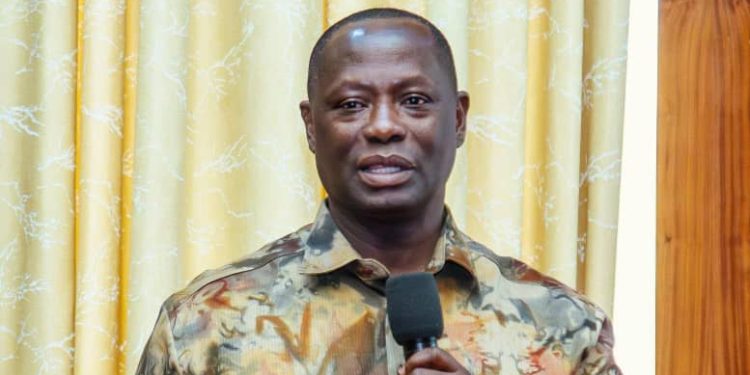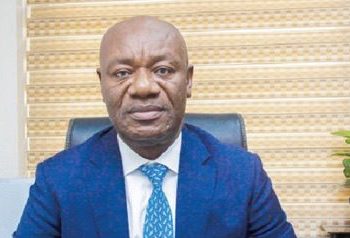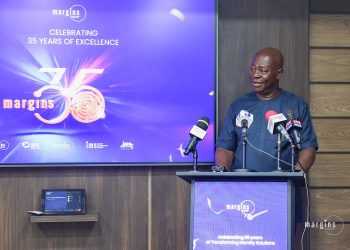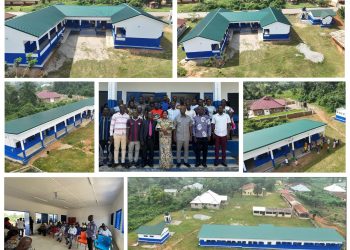The Ministry of Lands and Natural Resources has unveiled a sweeping five-pillar strategy aimed at ending illegal mining, widely known as galamsey, while ensuring that small-scale mining contributes meaningfully to Ghana’s economic growth without degrading the environment.
The strategy, which was presented at President John Dramani Mahama’s recent stakeholder dialogue with civil society in Accra, focuses on five pillars: Stakeholder Engagement, Regulatory Reforms, Law Enforcement, Reclamation, and Alternative Livelihoods.
Sector Minister Emmanuel Armah-Kofi Buah, who also serves as caretaker Minister for Environment, Science and Technology, said the government is pursuing “a comprehensive, multi-pronged approach” to curb galamsey once and for all.
Stakeholder engagement: Building national consensus
The first pillar emphasises consensus-building among all Ghanaians, recognising that the battle against illegal mining cannot be won by the government alone.
Traditional leaders, local authorities, academia, civil society organisations, and ordinary residents are being encouraged to take ownership of the fight.
The Ministry has rolled out public education campaigns to build awareness of the dangers of galamsey, while promoting responsible mining practices among licensed operators.
“Our people must know that this fight is about their survival and the survival of generations yet unborn,” the Minister stressed.
Strengthening the licensing regime
The second pillar focuses on regulatory reform, particularly the licensing regime.
The Ministry is strengthening monitoring mechanisms to ensure that only duly registered and vetted miners are allowed to operate.
As part of these reforms, District Mining Committees will now play a critical role in license issuance, making recommendations to the Minerals Commission before permits are granted.
This decentralisation initiative is expected to reduce loopholes, enhance accountability, and bring local communities into the decision-making process.
Cracking down with NAIMOS
A central plank of the government’s approach is the intensified enforcement of mining laws.
Sustained operations are being carried out in collaboration with security agencies to clamp down on unlicensed miners while protecting those operating within the law.
At the heart of these operations is the National Anti-Illegal Mining Operations Secretariat (NAIMOS), which coordinates all anti-galamsey enforcement activities. Digital technology is being deployed, including tracking excavator imports, geotagging mining equipment, and geofencing sites to restrict unauthorised activity.
NAIMOS has already chalked up significant successes, with arrests made, equipment confiscated, and prosecutions supported with digital evidence.
Reclamation: Healing rivers and forests
The fourth pillar targets the rehabilitation of degraded lands and the restoration of polluted water bodies.
Two flagship initiatives—the Tree for Life Reforestation Programme and the Blue Water Initiative—are spearheading this environmental recovery drive.
Communities hardest hit by galamsey are receiving focused attention, with reclamation projects underway across several regions.
Forest reserves and water bodies have also been declared security zones, guarded by NAIMOS task forces.
Under the anti-galamsey task force known as Blue Water Initiative, “Blue Water Guards” have been deployed as community vanguards in riverine areas.
Their role is to create awareness, keep illegal miners off water bodies, and serve as first responders for NAIMOS.
So far, about 900 water pumps seized from illegal miners have been redirected to farmers under the Ministry of Agriculture, offering productive alternatives.
Alternative livelihoods: Transforming communities
The fifth pillar provides sustainable economic opportunities for communities historically dependent on galamsey.
Through the Responsible Cooperative Mining and Skills Development Programme (rCOMSDEP), the government is supporting vocational training, agricultural projects, agro-processing, and digital entrepreneurship to reduce reliance on illegal mining.
The programme is designed to promote environmentally responsible cooperative mining, restore degraded lands for farming and forestry, and create long-term, sustainable employment opportunities for youth and women.
Mahama pledges transparency and accountability
President Mahama, addressing the dialogue, assured civil society of the government’s full transparency in the fight against galamsey. He urged Ghanaians to hold leaders accountable as the reforms unfold.
“I’m determined. We need your support. We need your criticism, your advocacy, your pressure. Continue to put our feet to the fire, and let’s win this fight together,” the President said.
He stressed that the current generation bears a duty to protect Ghana’s natural heritage.
“Our great-grandfathers gave us a beautiful country with trees and rivers. We should not hand over poisoned water bodies or desecrated forests to our children and grandchildren,” he warned.
A path toward lasting solutions
With the reforms taking shape and the anti-galamsey taskforce NAIMOS technology reinforcing enforcement, both the Ministry and the Presidency are confident that Ghana is laying the foundation for a transparent, law-abiding, and environmentally sustainable small-scale mining sector.
Stakeholders agree that while challenges remain, the five-pillar strategy marks the most comprehensive blueprint yet for tackling the galamsey menace—one that blends enforcement with community participation, technology, and long-term economic alternatives.











